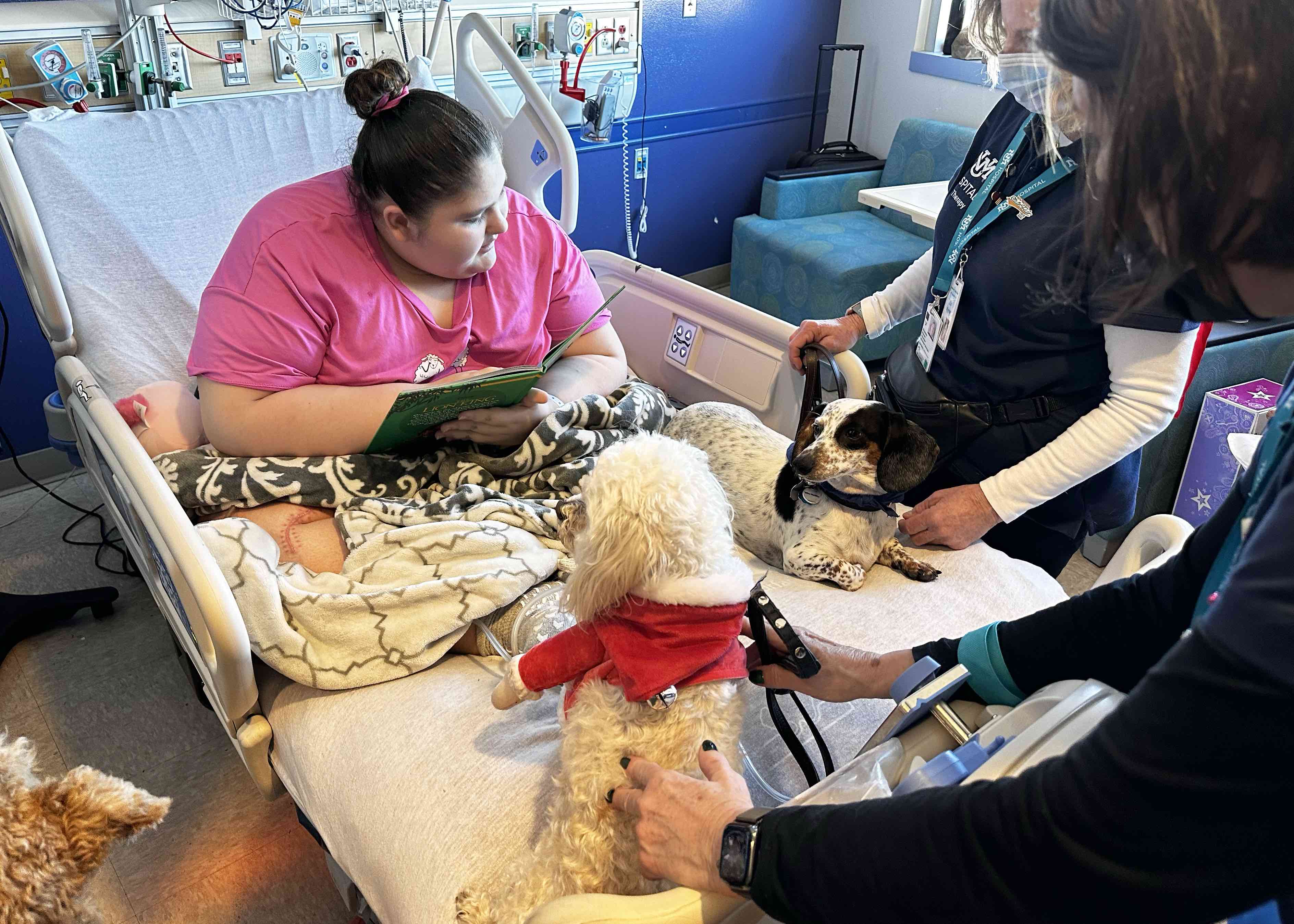Comfortably sprawled on a hospital bed next to a patient at The University of New Mexico Children’s Hospital, therapy dog Miles Barkley, an older white and black dachshund, listened intently as the young reader cracked open a book.
Every third Friday, therapy dogs and their handlers from Southwest Canine Corps of Volunteers (SCCV) visit pediatric patients in their hospital rooms, where the patients can read to the dogs in a brand-new program called Puppy Dog Tales. On the last Tuesday of each month, patients can read to another group of therapy dogs in the Child Life activity room.
Handlers bring their registered pet therapy dogs into hospital rooms and provide children with an opportunity to read aloud. The dog sits calmly and quietly for the story, creating a relaxing atmosphere for the children.
This gives children an opportunity to practice their reading skills without fear or judgment.
We started the Puppy Dog Tales program because we wanted to give children in the hospital an opportunity to develop their reading skills and hopefully develop their love of reading. If they mess up on a word, the dog’s not going to judge them.
“We started the Puppy Dog Tales program because we wanted to give children in the hospital an opportunity to develop their reading skills and hopefully develop their love of reading,” said Barbara Temer, director of Volunteer Services at UNM Hospital. “If they mess up on a word, the dog’s not going to judge them.”
Studies show children who practice reading have greater success in school and go on to read at higher grade levels.
“We want to get kids to get excited about reading,” Temer said.
If the children are too young to read or don’t feel up to reading, they can pet the therapy dogs instead.
“If the patient just wants to love on the dog, that’s OK too,” said Karen Green, SCCV president. “Our team not only jumped at the chance to be part of this exciting reading program, but they also visit on a weekly basis around the hospital.”
Green said UNM Hospital was the first hospital in the state to allow an in-facility pet therapy program in 1987. The SCCV was formed a few years later, in 1989.
When the COVID-19 pandemic came to New Mexico, the pet therapy program was put on pause – but not for long.
“The therapy dogs were one of the first volunteer groups to reenter the hospital after COVID hit,” Green said. “There were lots of precautions to follow, but our teams were determined to help relieve the stress, first of the staff, and then be a distraction for appropriate patients.”
According to Green, each team, consisting of therapy dog and handler, goes through an initial evaluation, an in-house training session involving patients in nursing homes and a 2 1/2-half hour class of simulated visits conducted in the UNMH Basic and Advanced Training-Computer Assisted Visual Experience (BATCAVE). When they successfully pass those observations with members of the SCCV Training Committee as observers, the teams then must successfully pass five training visits at five different locations.
“SCCV has some very high standards, of which I am very proud,” Green said. “Our teams are excited to do it and love the staff at UNMH. Everyone has been so supportive and welcoming.”
